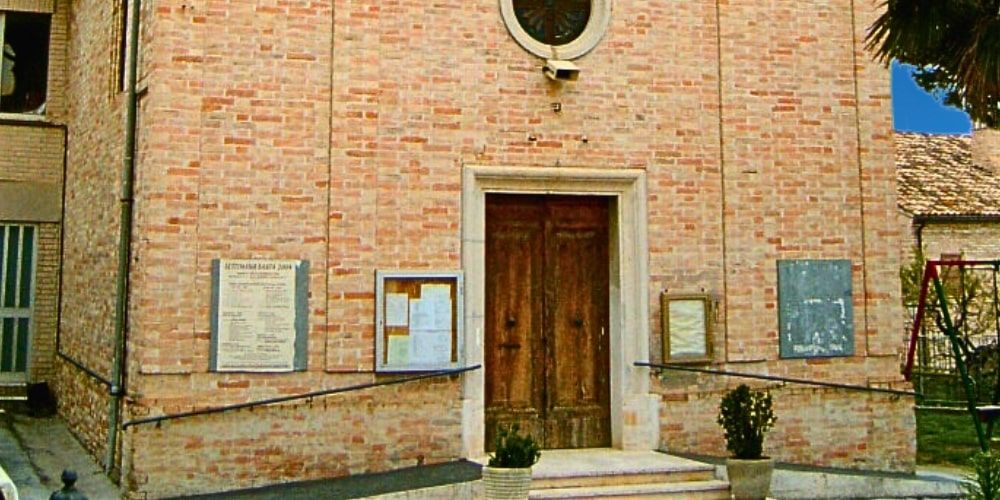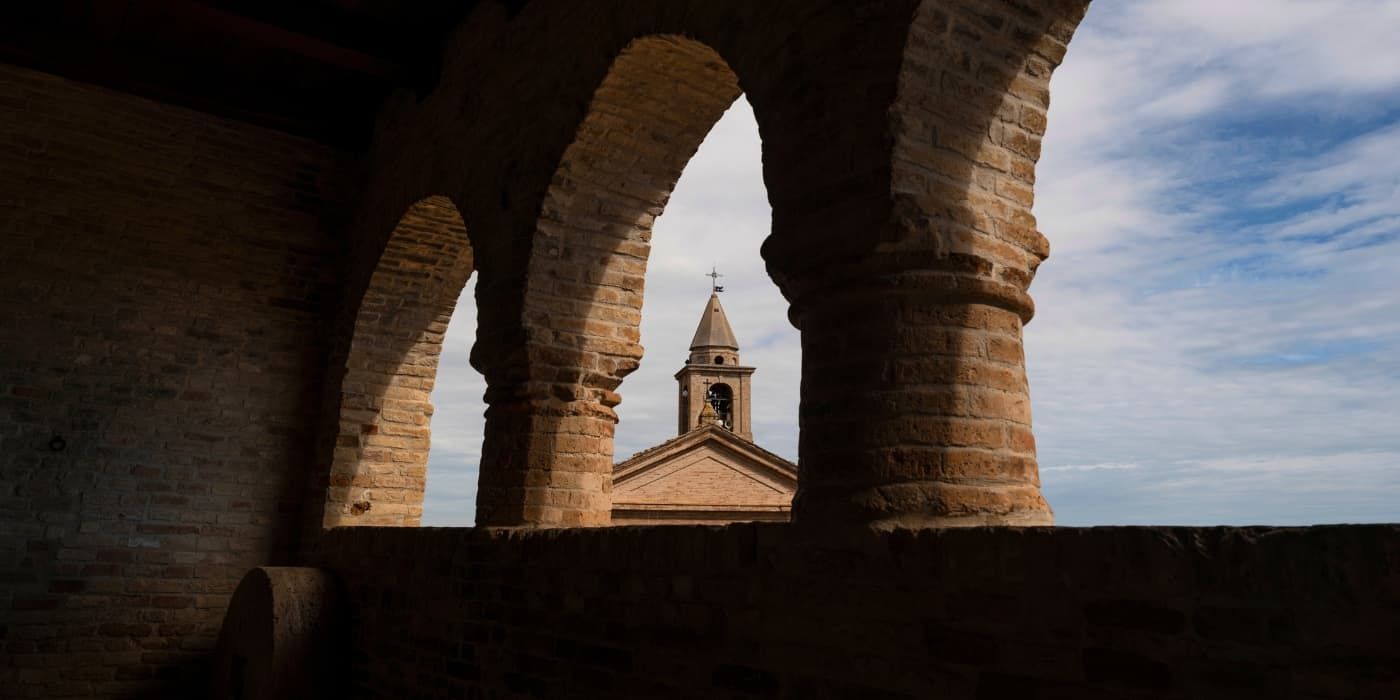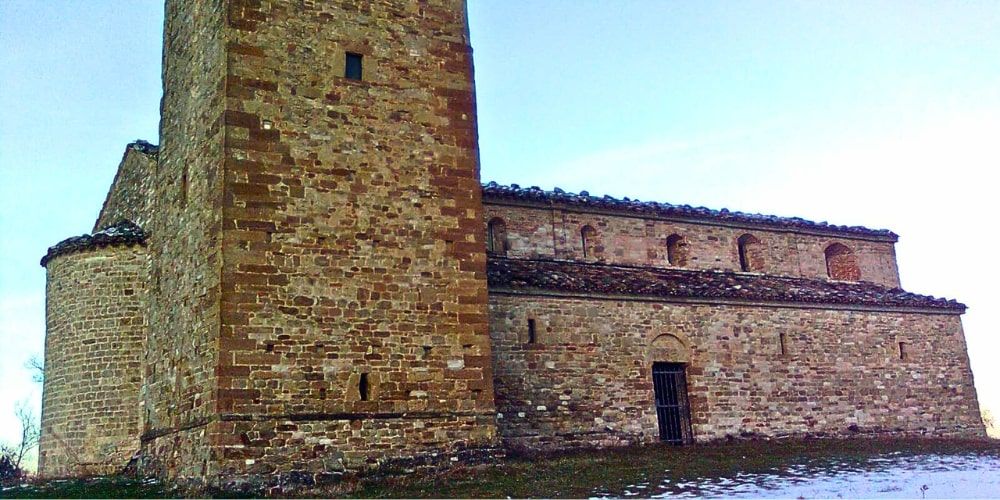Would you like to undertake a marvelous itinerary among the churches, centuries-old abbeys, and majestic castles set amidst the lush hills near Ponzano di Fermo? The territories bordering the Marche Apennines, far from the frenetic life of the metropolises, guard mystical places permeated with mysticism, increasingly visited by pilgrims on the trail of ancient monks and by lovers of a type of experiential tourism dedicated to reflection. By visiting these destinations, you will get in touch with a deeper and more intimate dimension of yourself, ideal for devoting yourself to meditation practices and rediscovering a psychophysical balance, purifying yourself from the stress of daily life and modernity.
The villages near Ponzano di Fermo, gems shaped by various peoples, cultures, and traditions throughout history, offer travelers and hikers authentic experiences and are scattered with artistic, naturalistic, and archaeological masterpieces. Let's start this new adventure among the churches, abbeys, and castles near Ponzano di Fermo.

Explore the most enchanting churches, abbeys, and castles around Ponzano di Fermo

The itinerary among the churches, abbeys, and castles near Ponzano di Fermo that we have outlined will take you to enchanting locations to reconnect with the beauty of the landscape and natural systems while exploring places permeated by faith and traversed by a millenary history. You will be able to admire the magnificence of monuments, religious buildings, fortified villages, and mighty manors, whose events have influenced the dynamics and the current geographical layout of the villages. Many places of worship in the Marches are authentic oases of the spirit, where wayfarers, trekkers, and the faithful can take refuge to embark on a journey of inner knowledge.
These environments dedicated to contemplative life and prayer welcomed the followers of fervent Monasticism, a religious movement devoted to spirituality, inspired by the charismatic Benedict of Norcia. The construction of abbeys further encouraged their spread, contributing to developing the first nuclei of medieval society. As you explore the charming churches, abbeys, and castles near Ponzano di Fermo, take the fantastic opportunity to marvel at the extraordinary natural views around you and enjoy the tranquillity of lush, unspoilt nature.
First stop: the Church of Santa Maria in Ponzano di Fermo

On our way to the first stop on our tour through history and spirituality to discover the main destinations of faith, visited by pilgrims who come here to contemplate the serenity of the abbeys and churches in the Marche region, there is the Church of Santa Maria in Ponzano di Fermo.
The religious building was built in 1792 by the Confraternity of the Holy Sacrament and Rosary in the area where the Church of Saint Maria a Pede Montis stood before. Admiring the façade, we can see the typical schemes of architect Pietro Augustoni of Como and the Oratory of 1872.
Nearby the enchanting village, which every year in July turns into the magical stage of the evocative and enthralling Historical Reenactment Ponzano di Fermo, we can admire other fascinating masterpieces of religious art and architecture, rich in devotion and mysticism, such as the spectacular Romanesque-style Church of San Marco and the mysterious site of the Madonna delle Cataste, where according to some legends prodigious apparitions took place.
Second stop: the Church of San Girolamo in Fermo

On our way to the second stop of our tour, we arrive at the Church of San Girolamo in the picturesque homonymous city quarter of Fermo. The religious building, which became a parish church in 1939, is located in the tiny district of the same name.
The first core dates back to the 15th century, and progressive work was carried out from 1610 onwards to enlarge the structure at the behest of eminent personalities, including Father Flaminio Ricci, who belonged to an illustrious patrician family, Gerolamo Ricci and Father Tommaso Sempronio of the Filippini di Fermo. Magnificent artworks are shielded inside, including seventeenth-century paintings depicting St Paul and St Jerome and a 16th-century wooden Crucifix.
Third stop: Sant'Agostino in Monterubbiano
The next stop on our itinerary among the most evocative places of worship nearby Ponzano di Fermo is the Church of Sant'Agostino in Monterubbiano, a splendid medieval village in the Marche hinterland, rich in religious traditions and 22 kilometres from Fermo. The building, adjacent to the convent of the Eremitani di Sant'Agostino, one of the oldest in the Fermo area, is located in Corso Italia, 15, one of the picturesque cobbled streets of the historic centre.
The foundation of the splendid parish church, designed according to the neoclassical style, dates back to 1266. The first restoration work was carried out between the 18th and 19th centuries. In addition, from 1925 to 1939, it underwent careful interventions under the direction of architect Carlo Calzecchi Onesti, which restored its original splendor: the decoration of the interiors, on the other hand, was entrusted to Antonio La Nave of Bari.
The interior contains valuable masterpieces that we suggest you admire, including the paintings by La Nave di Bari, such as Saint Augustine in Ecstasy, the Preaching of the Baptist, the Baptism of Jesus, the Last Supper, the Calling of Saint John the Evangelist to the Apostolate and the Seer of Patmos, as well as the worthy panels attributed to Vincenzo Pagani depicting Saint Stephen, Saint Catherine of Alexandria, Saint Vincent, Saint George, the Annunciation and the Archangel Gabriel.
Fourth stop: Church of San Bartolomeo in Campofilone
Before leaving for our next destination, we take a regenerating break, settling down at the tables of a café in the piazza for an excellent coffee. After refreshments, it is time to continue exploring the most evocative churches near Ponzano di Fermo area: we drive along Provincial Road 238, mesmerized by the extraordinary rural landscapes that stretch out before us. Heading towards the coast, we reach Campofilone, a fairy-tale medieval gem located in the hills and 26.8 km from the town.
One of its jewels is the ancient Abbey of San Bartolomeo in Campofilone, belonging to an architectural complex consisting of a monastery and a small church. Due to the small size of the original building dating back to the 11th century, in the 19th century, it was enlarged by the engineer Filippo Roncalli, who started work around 1843, designing the current structure in neoclassical style with a Greek cross plan, surmounted by a barrel vault.
We can see evidence of the medieval layout in the bell tower and the lush abbey garden. Exploring the interior, we can appreciate the extraordinary decorative paintings adorning the walls, apse, and vaults by Luigi Fontana of Montesampietrangeli and his pupil Nicola Achilli. Over time, the naves were embellished by adding altars, furnishings, and artworks, and the Hall of Coats of Arms was decorated with depictions of the commendatory abbots.
Fifth stop: explore the ancient Abbey of Sant' Elpidio a Mare
Our tour through the abbeys in the surrounding of Ponzano di Fermo takes us to the next stop, the Abbey of Sant'Elpidio a Mare. Entering the marvelous rural scenery around Sant'Elpidio a Mare, in the area between Casette d'Ete and the Bivio Cascinare, the thousand-year-old Abbey of Santa Croce al Chienti stands . According to tradition, it was consecrated in 887 in the presence of illustrious personalities, including the emperor Charles III the Great, nephew of the famous Charlemagne.
According to legend, its foundation evokes the romantic story of the thwarted love between Lothair and Imelda. In addition, ancient documents and medieval parchments confirm the existence of an earlier basilica on which a Benedictine coenobium developed.
The religious building, which has three naves, has undergone works and renovations that have progressively modified its structure over the centuries, enlarging the presbytery area and raising the apses and naves.
This ancient pilgrimage site is an architectural treasure, preserving an archaic and mysterious underground sacred site where an early community of Christian worshippers settled during the 5th century A.D. Exploring it, we can glimpse ancestral columns and cave altars. The environment has a magical atmosphere that evokes the spirituality of the East.
Sixth stop: parish church of Sant'Angelo in Montespino in Montefortino
To visit the next abbey, we climb aboard our car and head towards the foothills of the Sibillini Mountains, which have always been guardians of remote legends. Driving along the SP 239, we reach the Romanesque parish church of Sant'Angelo in Montespino in Montefortino, whose origins date back to 977. As we approach, we can admire the peculiar architecture, reminiscent of a fortress, the majestic façade with a 15th-century bell tower and a semicircular pronaos.
Upon entering, we notice an inscription on the top right of the monumental presbytery, which refers to the structure dating back to 1604, which consists of a basilica plan with an adjoining crypt and three naves with a gabled roof. The apse inside is the only surviving evidence of the original Longobard abbey. The crypts are decorated with splendid columns in granite, cipollino marble, Verona red breccia, Carrara white, and antique green.
Seventh stop: Abbey of San Marco alle Paludi in Fermo
Moving from the center of Fermo towards the lush countryside, we find the gracious Romanesque Church of San Marco alle Paludi, a pearl set a short distance from the coast near the Tenna River. The construction of this building, which can be easily reached by driving along the Statale Adriatica and then exiting at San Tommaso a Tre Archi and continuing in the direction of Contrada Paludi, dates back to around the 11th century. It was made by the Militi friars di Sant'Agostino.
Count Francesco Vitali of Fermo, a patrician of Norcia, owns the land on which it stands. Next to the church an austere bell tower with a pyramidal roof stands. It is one of the most evocative and splendid abbeys near Ponzano di Fermo. Its small size makes it a treasure trove of artworks: we can appreciate the division into three naves, bordered by walls that highlight the exposed brickwork, decorated with magnificent frescoes.
Benefiting from the clever insertion of transparent glass planes in the flooring, we can glimpse the foundations of the medieval structure during our visit. The side aisles house the votive offerings offered by the faithful for graces received.
Eighth stop: Torre di Palme
Let us set off together towards the next stop on the itinerary of manors in the area of Ponzano di Fermo, the castle of Torre di Palme. The origin of the picturesque village where it rises dates back to the Middle Ages: they built a fortified structure to protect the maritime port of ancient Palma from the attacks and threats of the pirates that raged along the coastal strip lapped by the Chienti and Tesino rivers.
The majestic castle, with its oldest sections built through the efforts of the Augustinian religious movement, is equipped with a remarkable defense system and preserves the original beauty and stylistic distinctiveness of the medieval and Renaissance layout. Travelers can look at enchanting landscapes from the openings that intersperse the walls.
Ninth stop: Moresco Castle
Heading towards a new destination on our itinerary, we arrive at Moresco, one of the most charming and evocative villages in Italy, which is 23 km from Fermo and easily reached by car. Looking out from its panoramic panoramic viewpoint, you can admire the spectacular landscapes of the lush Aso Valley.
One of the points of particular interest and relevance is the ancient and mighty manor house, which will enchant you with the magnificence of its towers, silhouetted against the town and which you can see even from afar. Its characteristic triangular structure guards the secrets of its glorious past. Crossing the threshold of its mighty walls, you will find yourself in a maze of narrow streets, historical buildings adorned with valuable frescoes, and the pretty square bordered by a portico. Inside, the nave of the ancient Church of Santa Maria in Castro is embellished with a marvelous fresco depicting the Madonna and Child.
One of the iconic elements of the ancient village is the majestic heptagonal tower. When you see it, you will be amazed by the natural beauties that dot the coastline, the hilly slopes, and the mysterious and legendary Sibillini Mountains. The charming Clock Tower indicates the entrance to the ancient village. Exploring the rooms of the town hall, you will have the opportunity to contemplate a splendid altarpiece by Vincenzo Pagani.
Tenth stop: Monteleone di Fermo Castle
Following the engaging tales of the historical events that have shaped the identity of these territories, we conclude our itinerary strolling together towards Monteleone di Fermo, whose origin is related to a Benedictine community of the monks form Farfa. The ancient castle, which stands on a rocky spur between the Lubrico and Ete Vivo rivers, consists of several districts that joined together to form an autonomous municipality. Arriving in the village, we are mesmerized by the ancient buildings that encircle Umberto I Square.
Our gaze embraces the mighty walls of the medieval castle, the hexagonal tower dating back to the 14th century, the evocative church of San Marone, and the elegant fortified tower that marks the entrance to the picturesque historic center. A narrow street winds sinuously near the centuries-old tower, leading to the magnificent overlook near the municipal palace, from which we can admire the scenic scenery of the Ete Valley, characterized by mud volcanoes and evocative gullies.
Beyond the arch, we can admire the splendid Church of San Giovanni Battista. Strolling through the charming village, we can appreciate its unique triangular morphology, punctuated at times by elegant noble dwellings. Among the splendid masterpieces the magnificent historic centre is studded with, we suggest a visit to the Irregular Hexagonal Tower, the Church of the Virgin Mary of Clemency, and the characteristic rural Church dedicated to the Virgin Mary of Loreto.

Progetto "Visit Ponzano di Fermo" per la valorizzazione del territorio e delle eccellenze locali, CUP F51F24000260006, finanziato per 36.885,25 € da FESR 2021-2027, ASSE 1, azione 1.2.2 intervento 1.2.2.2 Servizi digitali integrati
About the author
Written on 04/12/2024





Simone Pini
Embark on an exciting tour among the churches, abbeys, and castles near Ponzano di Fermo to take a journey through places rich in history and harmony.